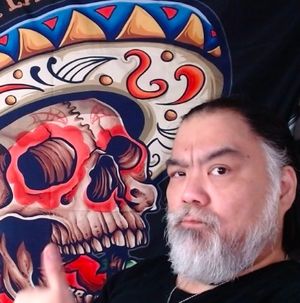Yesterday I had the opportunity to climb Mount Fuji.I am not a climber and I didn't have any interest in climbing Mount Fuji. Then one day Nori a good friend of mine texted me "wanna go climb Mount Fuji today?" and I couldn't come up with a good enough reason to say "nah" so I went.
Here are some things I learned.
Route selection.
There are 4 major routes on climbing Mount Fuji. The two major routes people pick are either the Yoshida-route (on the other Yamanishi side) and the Fujinomina route which we picked. The Yoshida route is very fell supported with many stops and shops along the route. (or so I've read but since I haven't climbed it wouldn't know) The Fujinomiya route is the shortest of the routes but therefore is straight up vertical climb.Mount Fuji has an official open season usually from July to late September, check official website for the dates. The reason is that since Mount Fuji is an independent peak the weather and conditions can get very dangerous during the colder seasons. Each route has its own opening per season and if you select a route that isn't "officially" open, non of the stops will be open so plan your support plan accordingly.
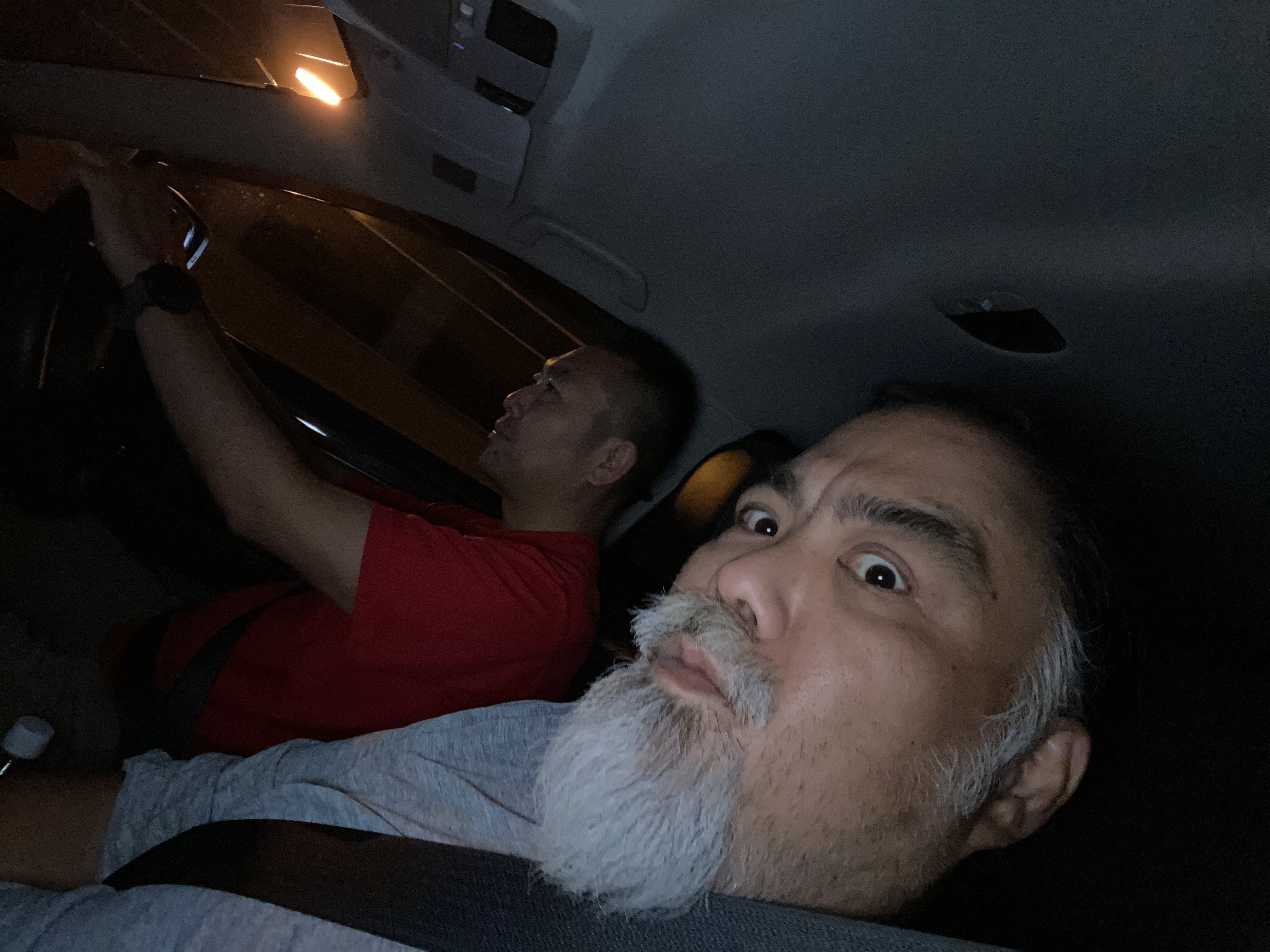
Nori a good friend of mine and serious climber guided me for this climb. We tried to climb earlier last week, however we were met with gusts so hard we could barely stand, so we decided not to forward. This weekend the weather was suppose to be much nicer so we tried again.
We got to the parking lot by the 5th station around 0230 late at night. We decided to spend some time for me to adjust to the lower oxygen level (around 74%). The 5th station sits at 2400 meters above the sea level and you can feel it. After an hour or so we headed off.
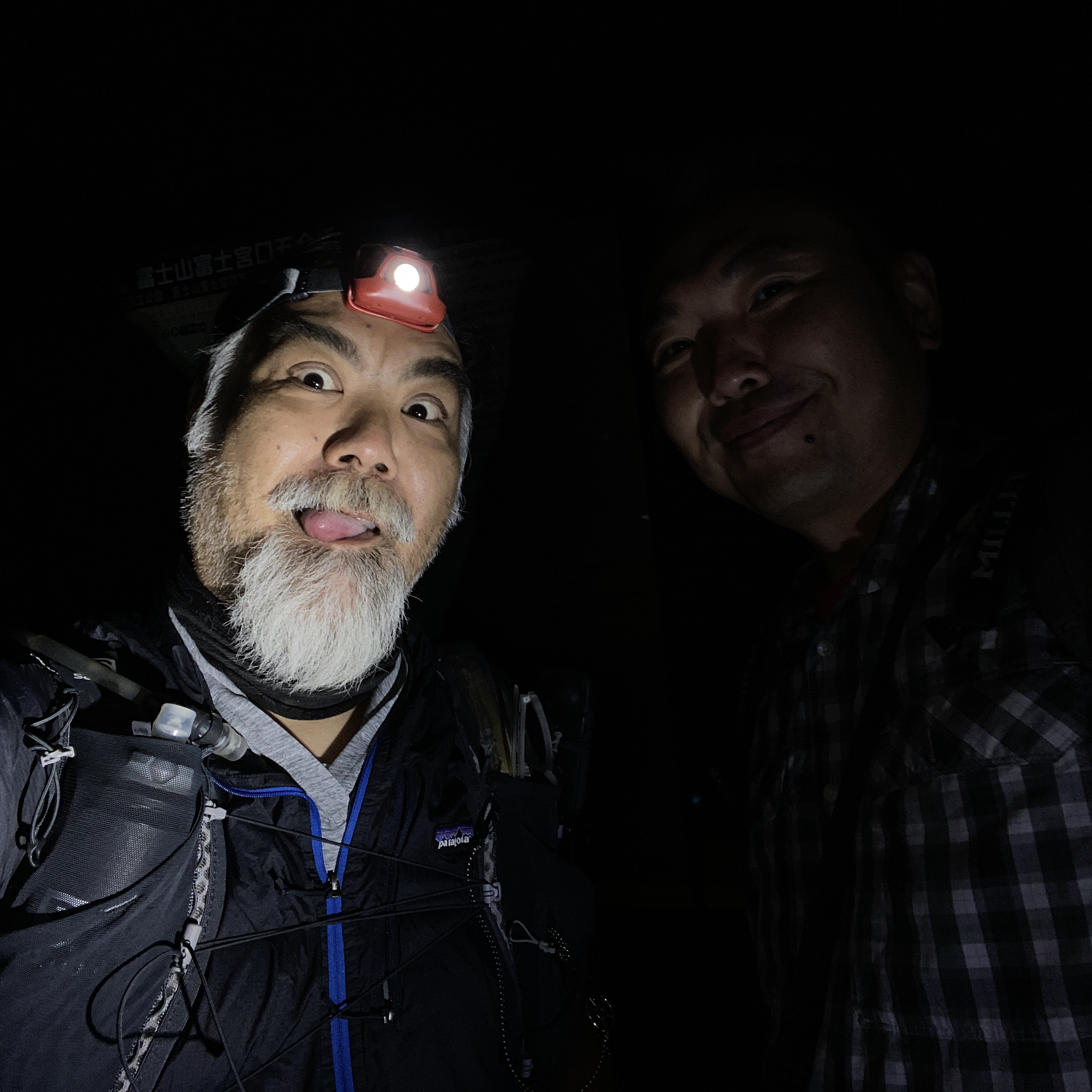
Mount Fuji is a dormant volcano so the terrain is very coarse volcanic rock formation and is hard and sharp. So wear good shoes and long socks to protect your ankles.
I decided to wear my trail running shoes and a full lower body compression tights with knee and hip support. I also wrapped my ankles with support tape to give it more stability. Both of these worked out great especially for the decent.
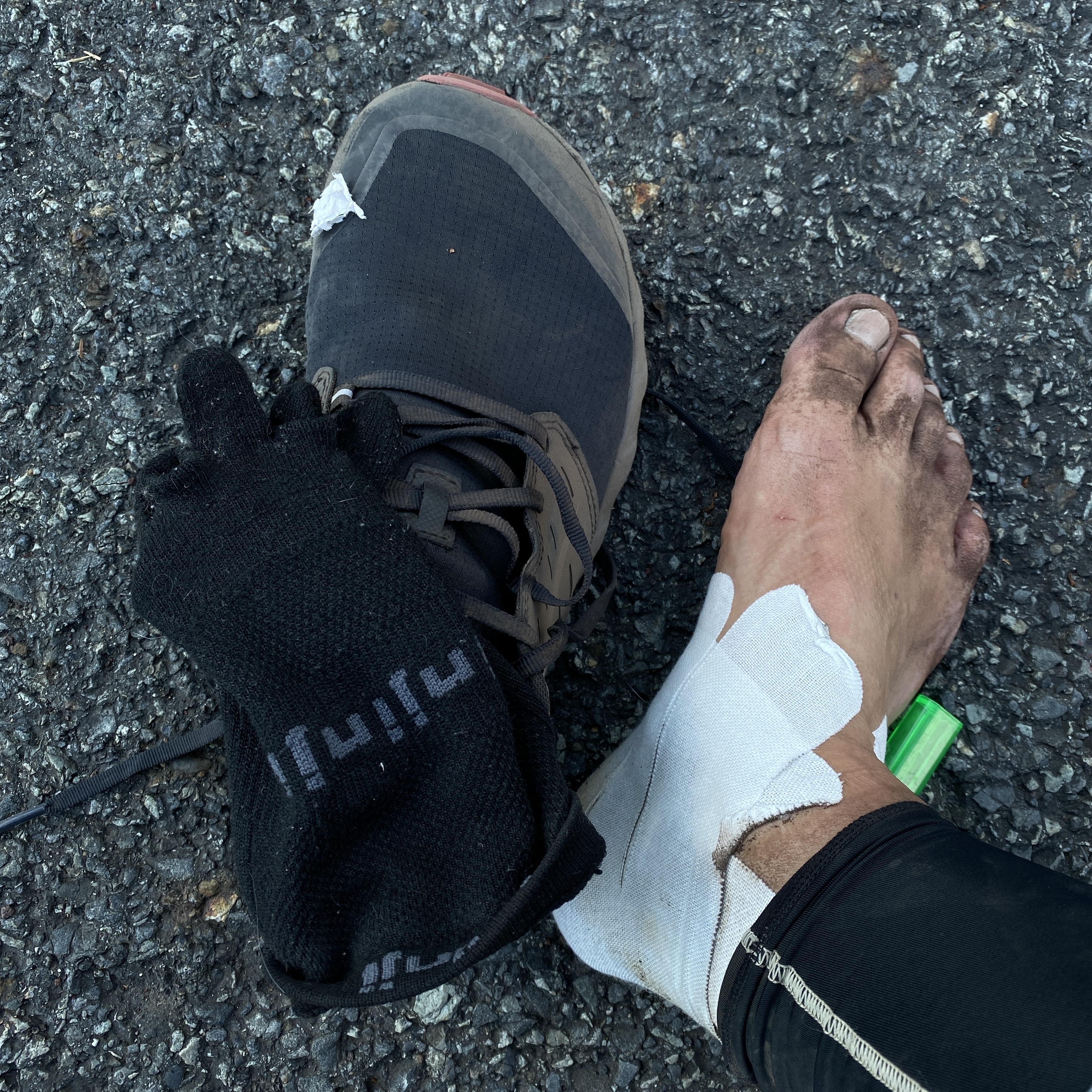
If you have ever seen a Ukiyoe painting of Mount Fuji you notice that the closer you get to the summit the sharper the slope is. This is an accurate description. The Fujinomiya line has 6 stops along its route.
Station 5 (were we started)
Station 6
Station 7 (2780 meters)
Station Old 7 (3010 meters)
Station 8 (3250 meters)
Station 9 (3460 meters)
Station 9.5 (3590 meters)
Summit (3776 meters)
The higher up you go the steeper the slope gets. The reason why there
are two Station 7s is because of some historical bureaucratic failure and too long for this post.. maybe one day I'll write it up. (we had to look it up)
But the route gets significantly steeper and harder after Station 8. My cursing increased significantly and the volcanic rocky terrain mixed with the low oxygen (about 64% compared to sea level 0), also this is where the "it looks so close yet,so why the f ain't i getting any closer" starts. You can see the stations higher up but you feel like you are climbing a jackob's ladder and not getting any closer. Also the weather here can suddenly change for the worst. Temperature drops, winds pick up an rain comes in. You really need to pack at least some sort of wind shell and or rain gear.

Once you hit station 9 its a very vertical zig zagging to the rim of Mount Fuji.
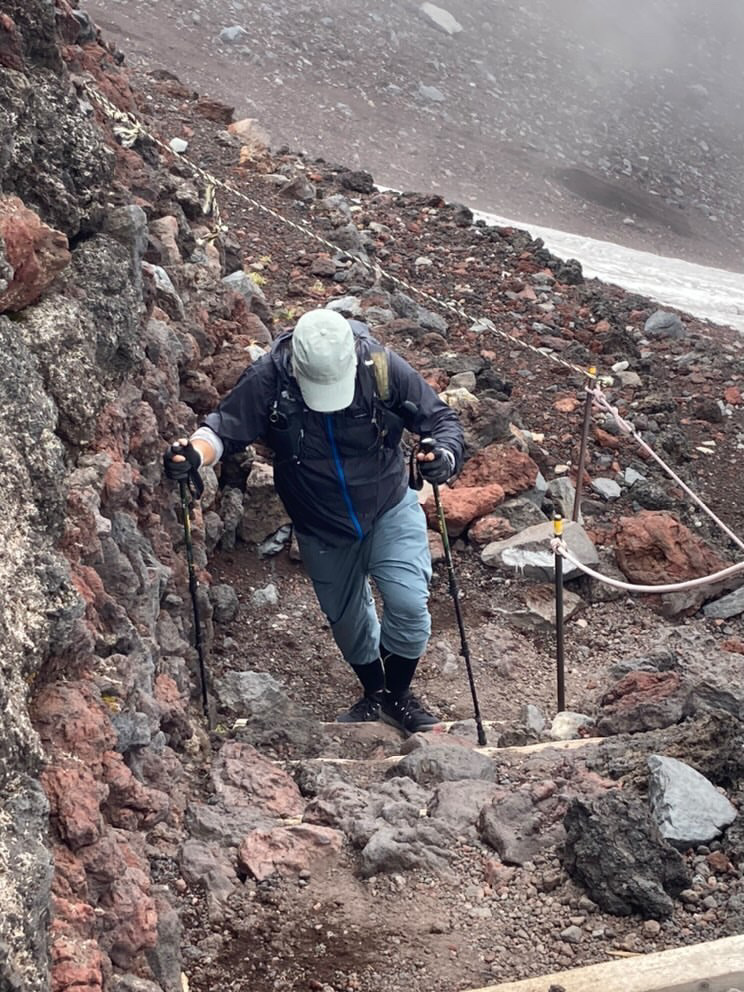
Many climbers reach the rim and see the Asama Taisha Gate and think they have "sumitted" Mount Fuji, but in reality the actual summit is by the observatory station along the rim of the volcanic opening.

This is the last nail in the coffin climb its only a 15 minute walk but the slope is very steep and terrain super slippery.
The actual "summit"
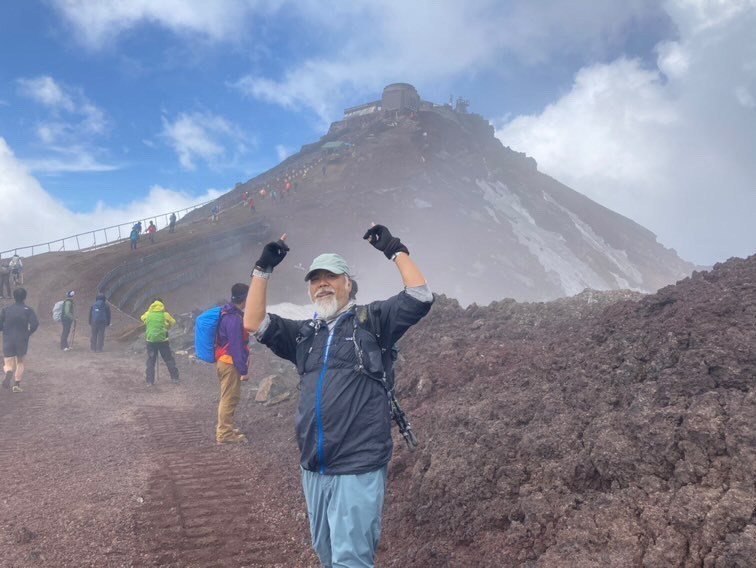
So in short:
1.Bring clothes that can handle various weather conditions.
I wore a Patagonia sun shirt (Capilene Cool Daily Hoodie) , with a Finetrack dry mesh underneath it. CW-X compression tights (expert stability model), injinji 5 finger socks and Altra Superior 5 trail running shoes.
But I also had packed a Patagonia Hoodini jacket, and rain jacket / pants from Montbel. The windshell (Hoodinin jacket) came in handy multiple times.
Also I had some Buff headwraps and a cap. (make sure to attach a string to your cap so that when there is a gust if it get blown off your head it doesn't fly off the mountain)
Sunglasses:
When the sun is out the surface can turn into one hot grilling environment. Protect your eyes from the UV rays and they can help you see where to put your foot down.
2. Trekking poles.
I don't think I could have summited and come back without these. They were extremely helpful going up and coming down.
3. Water.
Bring ample water. There were no "free water sources" along the route,I packed a hydration bladder (2L) and a 500L flask and I was out of water on at Station 7 on the way back. Nori gave me some from his stash so I was ok. Its nice to have a good climber as a friend and a guide.
4. Food.
Bring food (and a garbage bag for trash to take home) if you end up going when Mount Fuji is not "officially open" then none of the stations will have supplies for you to purchase. (also bring small change) So yea bring food or snacks. I had some energy gels and some other small high-energy backpacking snacks packed.
5.Going down is harder than going up
It took me 6 hours to go up to the summit, Nori paced me slow so I wouldn't suffer from altitude sickness. But the descent was much harder for an inexperienced climber like myself. Going up I could kinda power my way up but going down I fell over multiple times, thankfully nothing serious, because of the gravelly terrain. I just don' have the experience enough to commit to going down forward stepping into the rocky terrain, and I would often find myself wondering "where do I step next?" But taking it slow I eventually made it off Mount Fuji.
6.Start early.
Start early because there will be less traffic on the route but more importantly it will give you a buffer to handle unexpected situations. We reached the summit around 1000 and then there was a sudden downpour of heavy rain. If that rain had caught us mid route, it would have turned into one miserable experience. Also since there are no street lights on the route if you get to the summit past noon, there is a chance you gonna have to descent in the dark. As we were descending Nori who is not only a good climber but also a good person asked people who he thought started too late if they planned to go up to the summit some took his advice and decided not to summit. The terrain is very rocky filled with gravel and sharp edges due to it volcanic rock formation descending this in the dark can be dangerous.

